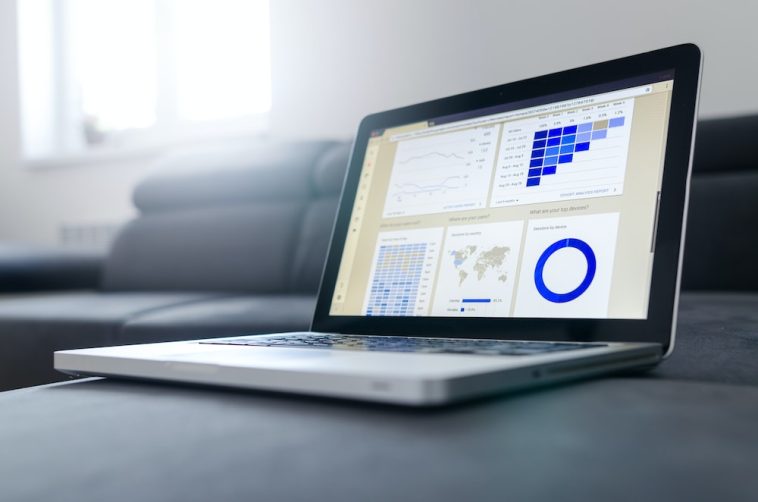Introduction.
Statista is one of the top platforms in the world for market data, consumer insights, and statistics. If you’ve ever needed numbers to back up a business idea or a trend you’re studying, there’s a good chance you’ve come across one of their charts.
The cool thing is, those charts come from somewhere—and sometimes, they come from people or companies just like yours.
So here’s the thing: becoming a data partner with Statista can open up some seriously exciting doors.
It’s not just about sharing your research or data with a big audience. It’s about building credibility, boosting your visibility, and tapping into a huge global platform that reaches millions of people, from journalists to CEOs to students and everyone in between.
If you’re a business, organization, or researcher that produces solid data, this is a chance to make that data work even harder for you.
Let me walk you through how it works and how you can get started.
What Is a Statista Data Partner?
Being a data partner means that you work with Statista to publish your data or research through their platform.
They take your insights—whether it’s survey results, white papers, industry reports, or any kind of reliable data—and make them available to their audience.
Your brand stays front and center. You get proper credit. And you also gain access to Statista’s reach, which includes over 2 million registered users and 30 million monthly visits across the globe.
So this isn’t just about sharing for free—it’s a partnership where both sides benefit. You provide quality data, and Statista gives it a platform.
Why Would You Want to Become a Data Partner?
I’ll be honest—this is not just about the warm feeling of sharing your work. It’s a smart move if you care about reach, reputation, or marketing.
Here’s why:
1. You Get Exposure
Statista’s audience includes Fortune 500 companies, global newsrooms, top universities, and decision-makers across every major industry. Having your data published there means people who matter are seeing your name.
2. It Builds Trust
People trust Statista. That trust transfers to your brand. When your name is attached to published data on a platform known for accuracy, it boosts your credibility fast.
3. You Get Backlinks (Great for SEO)
If Statista links back to your site, you get high-quality backlinks. That can do a lot for your search engine rankings and traffic. Especially if you’re trying to grow your authority in your niche.
4. You Stay Relevant
When your data is part of current conversations—like trends in AI, climate, e-commerce, or consumer behavior—you stay in the loop. Statista is where a lot of people go for that.
5. You Might Attract New Clients or Partners
Being seen in the right place brings attention. If someone sees your company featured on Statista, they might want to collaborate, buy your product, or bring you into a bigger project.
What Kind of Data are They Looking For?
Statista is open to many types of data. Here are a few things that tend to work well:
Survey results from consumers, professionals, or businesses
Industry studies or trend reports
Market research covering size, growth, or projections
White papers with original data or analysis
Data-rich infographics or visual research summaries
Rankings or comparisons (e.g., top apps, fastest-growing industries)
It needs to be well-sourced, accurate, and useful to others. Think of data that helps people make decisions or understand something better.
They’re especially interested in areas like:
Tech & digital trends
Retail & e-commerce
Finance & investment
Healthcare
Energy & environment
Consumer behavior
AI & automation
Sustainability
But if your area isn’t listed here and your data is strong, it’s still worth reaching out.
How Do I Become a Statista Data Partner?
Here’s how to do it without getting overwhelmed:
1. Get Your Data Ready
Pull together the research or data you think would be valuable to others. Make sure it’s clear, accurate, and easy to understand. If you already have published reports, white papers, or visual assets, that’s even better.
2. Contact the Right Team
You can reach out to Statista’s content partnerships team. They’re open to hearing from researchers, think tanks, media companies, consulting firms, and businesses with high-quality data.
Use this email to contact them: [email protected]
Or, check out the official Statista Partner page for more info.
Be clear about:
Who you are
What kind of data you produce
Why it’s valuable
Any past examples of your work
If you have a website or portfolio, include that too.
3. Discuss Licensing & Credits
Statista usually takes care of the formatting, tagging, and integration of your data on their site.
They’ll also make sure your brand is properly credited, and if there are licensing or republishing terms, they’ll walk you through that.
This is a good time to ask questions about:
Backlinking
Copyright
Visibility
Republishing rules
4. Start Small if Needed
If you’re unsure, suggest sharing one report or dataset as a trial run. That way, both sides can get a feel for the partnership before going deeper.
Real Examples of Statista Data Partners
Want some real-world proof? Here are a few companies and institutions already working with Statista:
- Deloitte – Shares regular insights on business, innovation, and industry trends
- PwC – Provides detailed industry outlooks and forecasts
- Nielsen – Shares consumer and media data
- The World Bank – Offers global development data
- McKinsey & Company – Insights on strategy, technology, and economics
You don’t need to be a global firm to partner with them. If your data is solid, relevant, and credible, you’ve got a shot.
FAQs
Do I get paid for sharing my data with Statista?
Usually, this is more of a visibility and credibility partnership than a paid arrangement. But the long-term value (traffic, exposure, brand recognition) often makes up for it.
What if I don’t have a formal report—just raw data?
That’s okay, but you’ll want to organize it in a way that tells a story. Even a simple, clean spreadsheet or a well-designed infographic can be a great start.
Can I request to remove data later?
You can discuss this upfront. Most platforms respect takedown requests, especially for outdated or sensitive material, but always clarify terms before publishing.
What languages do they accept?
Statista operates in several languages, including English, German, French, and Spanish. English is the most common for international reach.
Final Thoughts
Becoming a data partner with Statista isn’t as hard as it might sound. If you’ve got insights or research that others could benefit from, it’s a great way to build authority and get your name out there.
The best part? You don’t need to be a huge company. You just need quality content and a willingness to share.
So now the big question: Are you ready to turn your research into influence by becoming a Statista data partner?





GIPHY App Key not set. Please check settings